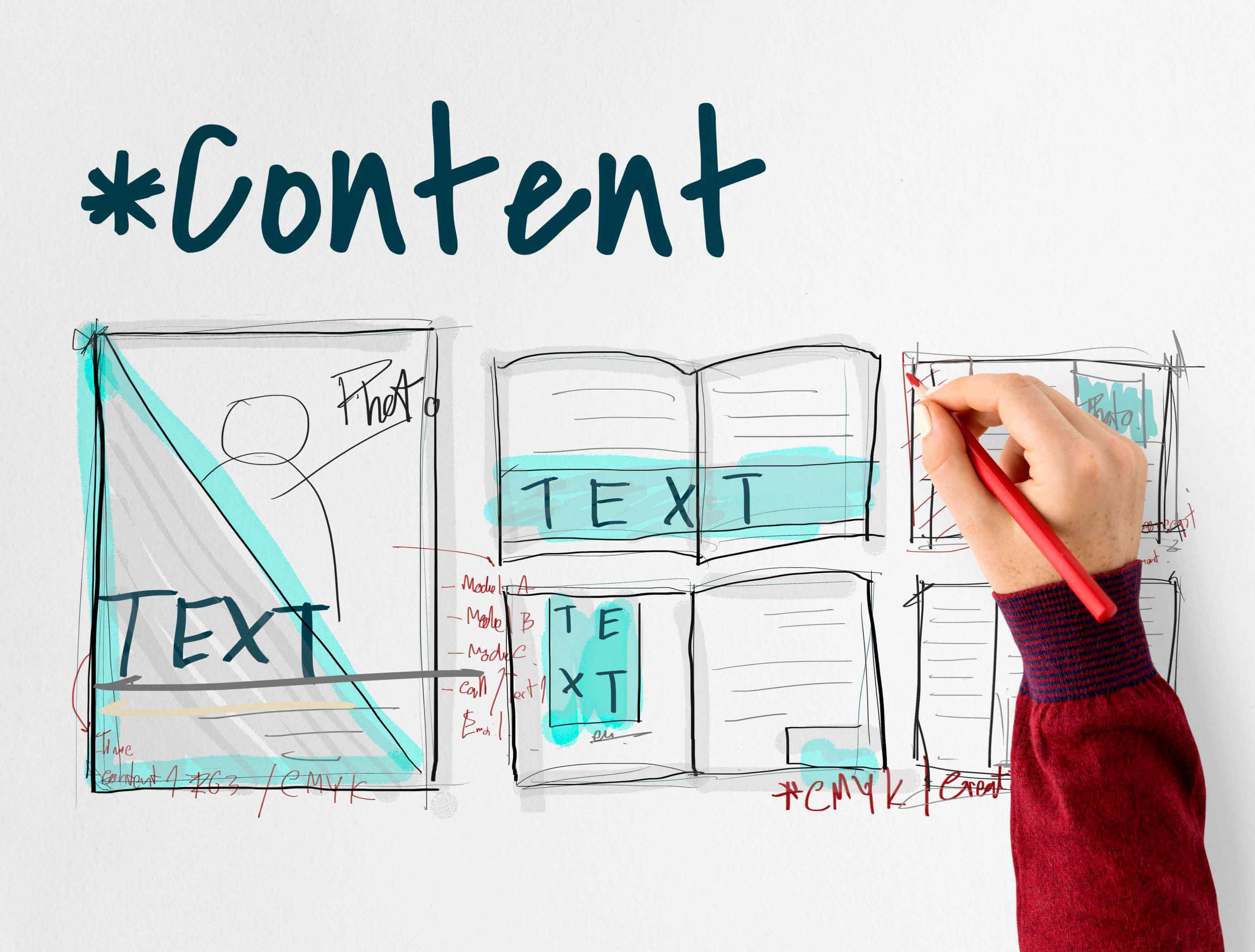Understanding Agile Methodology

What is Agile Project Management?
Agile is a project management that is especially incorporated within software development processes. Agile project management methodology was created by Ken Schwaber and Jeff Sutherland during the 1970s. Agile methodology was an answer to the need of more flexible and fast-paced projects that truly answer the market’s needs and the fast-pace.
Agile methodology emphasizes flexibility, collaboration, and customer-centricity. Agile project management allows teams to not follow a rigid, linear plan; instead they are able to adapt to changes quickly and efficiently. Agile methodology addresses projects within the scope of 2 or 4 weeks of sprint cycles. These sprint cycles allow teams to collaborate and adapt to the changes during the development phases of the projects.
Understanding various project management approaches is crucial for tailoring solutions that best fit particular situations. This methodology allows teams to face any unexpected difficulties easily. The core characteristic of agile methodology is iterative development and flexibility. Iterative development processes allow collaboration among different teams across different situations.
Principles of Agile Methodology
-
Customer Satisfaction: Agile methodology aims to answer customer needs and expectations with a faster pace in shorter timescales.
-
Embrace Change: Agile processes’s core difference is that it is adaptable and flexible to any and all kinds of unexpected changes even at a later point through the project.
-
Frequent Delivery: Agile methodology allows teams to deliver software projects faster and more frequently.
-
Collaboration: Agile requires stakeholders and developers to collaborate throughout the project.
-
Motivated Individuals: The fast-pace, flexibility, and collaboration created by Agile motivates teams around the project.
-
Working Software: Working software is the primary measure of progress.
-
Sustainable Development: Sustainable development is another core characteristic of agile processes.
-
Technical Excellence: Continuous attention to technical excellence and good design enhances agility.
-
Simplicity: The time limitations and fast-paced nature of Agile sprints require and create simplicity.
-
Self-Organizing Teams: Agile project sprints are done effectively through self-organizing teams.
-
Reflection and Adjustment: What makes agile adaptable to changes is continuous reflections and adjustments made by teams. Communication and reflection in between intervals create the best results for the projects.
Effective implementation of these Agile principles requires strong project management skills, which include both hard and soft skills essential for planning, monitoring, and motivating teams, as well as engaging with stakeholders.
Benefits of Adopting Agile Practices
Agile practices have been proven useful throughout the years for software projects. Adopting agile practices offers many different benefits such as;
-
Flexibility and Adaptability
-
Improved Product Quality
-
Customer-Centric Approach
-
Faster Time-to-Market
-
Enhanced Collaboration
-
Risk Mitigation
-
Increased Transparency
Project management software plays a crucial role in enhancing collaboration and transparency within Agile teams.
Agile methodology is a flexible, customer-centric approach to project management. It emphasizes collaboration, adaptability to change, and iterative development. Agile methodology is defined by its core principles such as; frequent delivery, continuous reflection, and simplicity. Agile creates positive results such as faster time-to-market and improved product quality.
Project management tools assist in achieving these benefits by organizing and tracking tasks effectively, ensuring that teams can collaborate seamlessly and report progress accurately.
Do you want to learn about free AI tools that you can use for your brand's marketing operations? Discover AI in Digital Marketing, The Best AI Image Generators, The Best AI Logo Generators & Best AI Tools for Digital Agencies.
Agile vs. Scrum

What is Scrum?
Scrum is a specific framework within the broader Agile methodology that is much more focused to the specific stages of development. Agile is the overall umbrella methodology whereas Scrum is specific details regarding the sprint phases. The sprint stages in the Agile methodology usually lasts 2-4 weeks. Scrum methodology specifically focuses on organizing these stages, often led by a project manager who ensures that the team meets defined goals, budgets, and timelines.
Comparing Agile and Scrum
Agile is the umbrella philosophy and a set of principles about project management and software development that focuses on adaptability, fşexibility, and user-centric approaches. Scrum is the concrete implementation of Agile principles during the development stages. Scrum offers methods such as Daily Stand-ups and Sprint Reviews that incorporate Agile principles into the practice. You can see the detailed differences between Agile and Scrum shown in the table below:
|
Aspect |
Agile |
Scrum |
|
Definition |
A broad set of principles and practices for iterative and incremental software development and project management. |
A specific framework within Agile for managing complex projects through iterative progress and team collaboration. |
|
Origin |
Agile Manifesto (2001) |
Scrum Guide (first formalized in 1995 by Jeff Sutherland and Ken Schwaber) |
|
Approach |
General approach to managing projects with flexibility and continuous improvement. |
Specific methodology focusing on iterative progress, regular feedback, and team collaboration. |
|
Principles |
Emphasizes collaboration, customer feedback, and adaptability. |
Focuses on sprints, roles, ceremonies, and artifacts to manage the project. |
|
Scope |
Encompasses various methodologies including Scrum, Kanban, XP, etc. |
A specific framework within Agile with defined roles, events, and artifacts. |
|
Framework |
Agile is a mindset and set of principles; it doesn’t prescribe specific processes or practices. |
Scrum provides a structured framework with specific roles (Scrum Master, Product Owner, Development Team), ceremonies (Sprint Planning, Daily Stand-up, Sprint Review, Sprint Retrospective), and artifacts (Product Backlog, Sprint Backlog, Increment). |
|
Roles |
No specific roles; varies depending on the Agile methodology used. |
Defines clear roles: Scrum Master, Product Owner, and Development Team. |
|
Time-boxed Iterations |
Agile practices may or may not use time-boxed iterations. |
Scrum uses fixed-length iterations called Sprints (usually 2-4 weeks). |
|
Ceremonies |
No fixed ceremonies; depends on the Agile framework (e.g., Kanban doesn’t have specific ceremonies). |
Scrum has specific ceremonies: Sprint Planning, Daily Stand-ups, Sprint Review, and Sprint Retrospective. |
|
Artifacts |
Agile doesn’t prescribe specific artifacts. |
Scrum defines specific artifacts: Product Backlog, Sprint Backlog, and Increment. |
|
Flexibility |
High flexibility in terms of processes and practices; can adapt various methodologies to fit the project. |
More structured and prescriptive; follows defined Scrum processes and ceremonies. |
|
Implementation |
Can be implemented in various ways depending on the chosen Agile methodology. |
Implemented through adherence to Scrum’s defined roles, ceremonies, and artifacts. |
|
Focus |
On delivering value through iterative development and responsiveness to change. |
On delivering value through organized sprints, continuous feedback, and team accountability. |
|
Best For |
Projects requiring broad flexibility and where multiple methodologies may be blended. |
Projects requiring structured processes with a focus on iterative progress and team collaboration. |
When to Use Scrum within an Agile Framework
Scrum is ideally used for projects that have unclear requirements and rapidly changing situations regarding the project. Scrum is best applied to complex projects because it utilizes iterative progress, a core characteristic of Agile processes, and constant feedback.
Scrum is a concrete framework within the broader Agile methodology. Agile is a flexible umbrella philosophy for project management. Scrum is the specific and structured approach with defined roles and requirements throughout the development process.
Agile vs. Waterfall

What is Waterfall?
Waterfall is the traditional project management approach. Waterfall methodology is rigid and sequential, following a defined project life cycle that includes stages from initiation to monitoring and controlling. The waterfall methodology traditionally follows 5 stages: gathering, design, implementation, testing, and deployment. This methodology requires each phase to be completed before moving on to the next and is directional unlike the cyclical and flexible approach of Agile. Since the stages are followed step-by-step, changes and adaptations are difficult to do during Waterfall methodologies.
Don't forget to check out our marketing related contents; Best Digital Marketing Tools, What Does a Digital Marketing Agency Do, Marketing Strategy of Tesla, What is Content Marketing & What is a Marketing Plan. See the details of Red Bull's Marketing Strategy.
Key Differences Between Agile and Waterfall
Agile and Waterfall are fundamentally different in their approach to project management. Agile is flexible, adaptive, iterative, and cyclical with its sprints. Agile allows teams to adapt and revise the project at almost every stage. However, Waterfall is linear and structured. There are distinct phases in Waterfall systems that make it difficult to adapt to changes.
In both Agile and Waterfall methodologies, defining the project scope is crucial. It helps in structuring the project team, setting realistic boundaries to prevent scope creep, and guiding project planning to ensure that objectives and deliverables are clearly outlined and understood by all stakeholders.
You can see the core differences between Agile and Waterfall regarding their approaches, phases, and many other aspects clearly in the table below:
|
Aspect |
Agile |
Waterfall |
|
Definition |
An iterative and incremental approach to project management and software development. |
A linear and sequential approach where each phase must be completed before the next begins. |
|
Approach |
Iterative and flexible, allowing for changes and continuous improvement. |
Linear and structured, with a clear, predefined sequence of phases. |
|
Project Phases |
Divided into iterative cycles or sprints, with phases overlapping and revisiting as needed. |
Divided into distinct and sequential phases: requirements, design, implementation, testing, deployment, and maintenance. |
|
Flexibility |
Highly flexible; changes can be made at any time based on feedback and evolving requirements. |
Rigid; changes are difficult and costly once a phase is completed. |
|
Customer Involvement |
Continuous customer involvement and feedback throughout the project. |
Limited customer involvement until the testing phase or after the project is complete. |
|
Documentation |
Minimal documentation; focus is on working software and adaptability. |
Extensive documentation at each phase, with detailed requirements and design specifications. |
|
Planning |
Initial planning is high-level, with detailed planning evolving throughout the project. |
Detailed planning is done at the beginning, with a clear roadmap for each phase. |
|
Risk Management |
Risks are managed iteratively through regular feedback and adjustments. |
Risks are identified and managed during the planning phase, with limited flexibility to adapt later. |
|
Delivery |
Incremental delivery of working software or project outputs in small, manageable parts. |
Final delivery of the complete product or project output after all phases are completed. |
|
Feedback Loop |
Regular feedback loops are integrated into the process, allowing for continuous improvement. |
Feedback is usually received only after the product is developed and tested, leading to potential rework. |
|
Project Size and Complexity |
Well-suited for complex and dynamic projects with evolving requirements. |
Best for projects with well-defined requirements and low likelihood of change. |
|
Time to Market |
Faster time to market through iterative releases and early delivery of components. |
Longer time to market due to the sequential nature and completion of all phases before delivery. |
|
Team Collaboration |
Emphasizes teamwork, collaboration, and communication throughout the project lifecycle. |
Team roles are more siloed, with less emphasis on ongoing collaboration. |
|
Change Management |
Embraces change and adapts to new requirements as they arise. |
Changes are managed through a formal change control process, which can be rigid and time-consuming. |
Check out the Best Digital Marketing Agencies to see the details of the best marketing agencies. Discover the Best Digital Marketing Agencies in Los Angeles.
Choosing Between Agile and Waterfall for Your Project Life Cycle
You need to clearly analyze the nature and requirements of the project you are working on before choosing between Agile or Waterfall methodologies. If your project is dynamic and requires flexibility, it would be best to use Agile methodology. Similarly you should implement Agile, if your project changes depending on frequent customer feedback. However, if you are working on a project with well-defined and stable requirements, you can benefit from Waterfall methodologies greatly since it offers a clear timeline and structure.
Waterfall is a traditional and linear project management approach. Waterfall is rigid and sequential, while Agile is flexible and allows for adaptation. Choosing between them depends on whether the project requires flexibility and frequent changes (Agile) or has well-defined, stable requirements (Waterfall).
SAFE Agile Methodology

Introduction to SAFE (Scaled Agile Framework)
Scaled Agile Framework (SAFE) is the framework that implements Agile practices on a large scale, especially for large enterprises. You might recall Scrm, which is the concrete application of Agile for small teams. Similarly, SAFE is the set of organizational and workflow patterns for large organizations. SAFE allows Agile principles to scale across multiple teams and departments. A project management professional plays a crucial role in implementing SAFE effectively, ensuring that Agile practices are maintained and optimized across the organization.
Core Principles of SAFE Agile
The core principles of SAFE Agile can be listed as;
-
alignment across teams
-
built-in quality
-
transparency
-
program execution
-
delivering value
-
continuous delivery
-
customer-centric mindset
-
Lean-Agile leadership
-
DevOps practices
Implementing SAFE in Large Organizations
You need to establish ART and PI to successfully implement SAFE Agile methodology for your project.
-
Agile Release Train (ART): You need to implement ART to synchronize multiple teams across the project.
-
PI (Program Increment): You need to implement PI and plan sessions to foster a culture of continuous learning and improvement throughout the project.
Benefits and Challenges of SAFE Agile
Let’s investigate the benefits and the challenges of implementing SAFE Agile practices in the table below:
|
Benefits |
Challenges |
|
alignment across large teams |
complexity of implementation |
|
high-quality products |
need for significant change regarding project practices |
|
faster delivery |
potential for over-bureaucratization |
|
enhanced ability to respond to market changes |
SAFE (Scaled Agile Framework) extends Agile principles to large organizations, enabling coordination across multiple teams. Its core principles include alignment, quality, and continuous delivery, but implementing SAFE can be complex and may require significant changes in project practices.
The Power of Forecasting Methodology in Project Management

What is Forecasting in Project Management?
Forecasting in project management refers to the efforts of predicting future project outcomes based on historical data, current trends, and expert judgment. Forecasting allows project managers to allocate resources effectively, anticipate potential challenges, and make informed decisions.
Quantitative vs. Qualitative Forecasting Techniques
Quantitative forecasting is based on numerical data and statistical methods. Examples of quantitative forecasting are time series analysis, regression models, and velocity tracking. On the other hand, qualitative forecasting is based on expert opinions and subjective assessments. Examples of qualitative forecasting are the delphi method, expert judgment, and scenario planning. The table below simply outlines the differences between “quantitative forecasting” and “qualitative forecasting”:
|
Aspect |
Quantitative Forecasting |
Qualitative Forecasting |
|
Data Basis |
Numerical, statistical |
Subjective, expert opinions |
|
Approach |
Objective, data-driven |
Subjective, experience-based |
|
Examples |
Time series analysis, velocity |
Delphi method, expert judgment |
|
Use in Agile |
Predicts sprint outcomes based on historical data |
Guides decisions in uncertain or novel situations |
Importance of Accurate Forecasting
Forecasting has direct impacts on some of the critical decisions regarding the project’s progress. Many decisions such as setting realistic project timelines, budgeting, and resource allocation depend on accurate forecasting. Accurate forecasting creates a clear picture of potential project outcomes and therefore minimizes risks and enhances decision-making.
Did you know you can discover the Best Mobile App Companies easily and find the perfect one for your brand? Check out the Best Mobile App Companies in USA.
Common Forecasting Techniques and Tools
|
Common forecasting techniques |
Common forecasting tools |
|
time series analysis |
Microsoft Project |
|
regression models |
Primavera |
|
Delphi method |
|
|
Monte Carlo simulation |
Forecasting in project management refers to the prediction of future outcomes using previous information, current trends, and expert judgment. Forecasting is a critical part of decision-making and resource allocation during the project. Quantitative techniques rely on statistical data, while qualitative methods depend on expert opinions. Different tools and techniques are used to conduct successful forecasting.
Project Management Error Estimation Methodology
Understanding Error Estimation in Projects
Error estimation is the process of identifying and quantifying potential deviations from the project plan. Error estimation is a necessary part of project management because almost every project faces some sort of challenges and deviations. Therefore, assessing the likelihood and impact of risks, inaccuracies in estimations, and unforeseen challenges is a necessary first step in project management.
Techniques for Estimating Errors and Risks
There are several techniques that can assist in the process of anticipating potential issues and developing coping strategies to reduce their effect on the project. Some of these techniques and methods can be listed as;
-
risk analysis
-
contingency planning
-
sensitivity analysis
-
expert judgment
How Error Estimation Impacts Project Planning and Execution
Error estimation is essential for risk perception and management, accurate budgeting, and timeline setting. Anticipating potential problems beforehand allows teams to act proactively instead of reacting to the projects. Error estimation creates better project execution and fewer problems during the processes.
Best Practices for Implementing Agile and Forecasting Methodologies

Tips for Successful Agile Adoption
-
Foster a culture of collaboration and continuous improvement. Project team members play a crucial role in Agile adoption by actively collaborating to accomplish project deliverables and ensuring effective communication among stakeholders.
-
Ensure that teams understand Agile principles.
-
Ensure that the teams are empowered to make decisions.
-
Implement agile and forecasting methodologies successfully.
-
Regularly review and adapt processes based on feedback.
Effective Forecasting Practices
The most effective forecasting practices combine quantitative and qualitative forecasting techniques. Because your intuition may fail you without accurate data and only data can be hindsided. The best way is to combine both of these approaches to get the best possible results. Utilize the opinions and experiences of experts and use reliable tools to predict project outcomes to get the most accurate estimations. Regularly update your forecasts based on real-time data.
Combining Agile and Forecasting for Optimal Project Outcomes
You can use the information created by your forecasting efforts to better implement the Agile practices. You can use tools like velocity tracking for sprint planning and resource allocation. Those tools are commonly used both for forecasting and Agile practices. Also, the overall roadmap created by forecasting practices can guide iterative development and optimize project results during Agile practices.
Error estimation predicts potential project deviations and allows proactive management of risks. Accurate error estimation improves planning and execution. You can combine effective forecasting techniques with Agile practices to get the best project outcomes.
Case Studies and Examples

Real-World Applications of Agile Methodologies
-
Spotify: Spotify is one of the most well-known real-world applications of Agile methodologies. Spotify implements a specific "Squad" model that allows Spotify to quickly adapt to market changes.
-
IBM: IBM uses Agile practices to improve the development of its software products.
-
ING Bank: ING Bank recently adopted the Spotify model and incorporated Agile. Through these efforts ING Bank improved its product delivery speed and quality.
-
Microsoft: Microsoft adopted Agile methodologies to improve its software development processes.
Best Practices of Forecasting

-
NASA's Project Management: NASA uses both quantitative and qualitative forecasting techniques to manage risks and ensure mission success. Monte Carlo simulations form examples of forecasting techniques used by NASA.
-
Procter & Gamble (P&G): P&G uses complex and advanced forecasting methods as the business model requires them to do so.
-
Zara: Zara uses forecasting by combining real-time quantitative sales data and qualitative insights of managers to predict future trends in fashion.
-
Tesla: Tesla uses qualitative and quantitative forecasting techniques to predict demand and manage its supply chain effectively.
Many successful firms and organizations use Agile methodologies and philosophies within their software processes. Similarly, forecasting is utilized by multiple firms to give educated guesses regarding project’s development.
Transform your digital strategy. Connect with expert marketers on Edvido.
Frequently Asked Questions
What is the Difference Between Agile and Scrum?
Agile is a project management methodology that can be used as a broad umbrella approach to project management. Agile emphasizes flexibility, collaboration, adaptation to change, and iterative development. On the other hand, Scrum is the specific and structured application of Agile principles within the process. Scrum organizes the development process into short, focused iterations called sprints and gives structured and well-defined roles to the team members.
How Does SAFE Agile Compare to Other Agile Frameworks?
SAFE (Scaled Agile Framework) refers to the application of Agile principles, similar to Scrum. However, SAFE is created for large enterprises and therefore can answer to the needs of more complex organizations. There are more layers and methods such as Agile Release Train (ART) and Program Increment (PI) planning within SAFE for better application.
What Are the Best Project Management Tools for Forecasting?
There are multiple tools that are commonly used by organizations to better apply forecasting techniques. Some of these tools for forecasting can be listed as Microsoft Project, Primavera, and Monte Carlo simulations. Such tools can simplify the forecasting efforts during project management tasks.
















